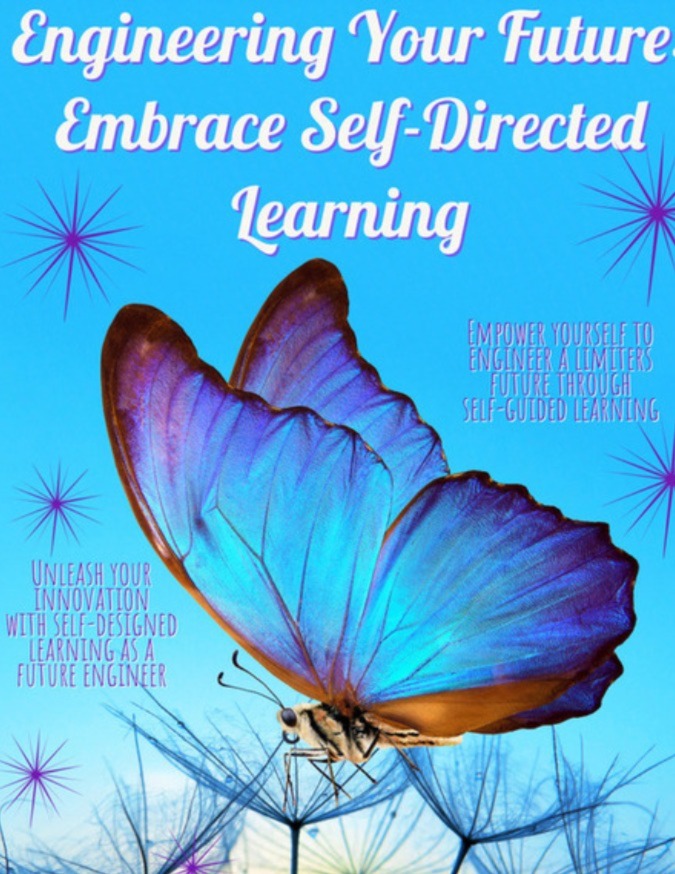An educational approach, in which a future technologist or an engineer takes the initiative for their own learning. The learners identify their own self learning needs, set their goals, and sketch their own strategies to gain the knowledge, skills and competencies. That is, they take their ownership of their education.
Characteristics of self-directed learning
Autonomy: Self-directed learners will take charge of their own learning style and process. They set their goals, resources, and monitor their own progress.
Self-motivation: Self-directed learners are motivated to learn and are driven by their own interests and goals. They have a strong desire, and are willing to put in the time and effort required to achieve their goals.
Self-evaluation: Self-directed learners assess their learning and progress. They adjust their learning strategies, by identifying the areas where they need improvement.
Active engagement: Self-directed learners are actively engaged in their own learning. They seek out opportunities to apply their learning, collaborate with others, and participate in activities that allow them to practice and refine their skills.
Lifelong learning: Self-directed learners view learning as a lifelong. They are open to new ideas and expand their skills.
Learning Process of Self-directed learning
Goal Setting, Planning, Resource Identification, Information Gathering, Skill Development, Application and Practice, Reflection and Evaluation:
Learning Strategies of Self-directed learning
Time Management, Organization, Self-Motivation, Self-Regulation, Critical Thinking, Problem-Solving, Information Literacy,
Resources of self-directed learning
Reference Books, Online Courses, Websites, Videos, Mentors, Professional Networks, Real-World Experiences.
Benefits of self-directed learning
Ownership of Learning, Personalized Learning, Adaptability, Continuous Growth, Deep Understanding, Enhanced Motivation, Lifelong Learning Skills.
Challenges of self-directed learning
Procrastination, Lack of Structure, Overwhelming Choices, Self-Discipline, Seeking Support, Setting Realistic Goals, Building Accountability.
Self-Assessment of self-directed learning
Self-Evaluation, Identifying Strengths and Weaknesses, Monitoring Progress, Adjusting Strategies, Celebrating Achievements, Identifying Further Learning Needs.
Models for self-directed learning
Long’s self-directed learning instructional model (1989): Long’s model is based on younger students. This model is an interaction between the degree to which students have the freedom to determine learning goals, seek resources and set the mode of evaluation, and the willingness of students to maintain active control of the learning process. Long’s (1989) model suggests four quadrants. Quadrant I describes a situation of low degree to which students have the freedom to determine learning goals, seek resources and set the mode of evaluation and high willingness of students to maintain active control of the learning process. In Quadrant II, a situation of high degree to which students have the freedom to determine learning goals, seek resources and set the mode of evaluation and high willingness of students to maintain active control of the learning process. Quadrant III describes exactly the opposite of Quadrant II. Lastly, Quadrant IV refers to the high degree to which students have the freedom to determine learning goals, seek resources and set the mode of evaluation and low willingness of students to maintain active control of the learning process.
Candy’s self-directed learning model (1991): In 1991, Candy proposed a model of two interacting dimensions of self-directed learning. One dimension is the amount of control within an institutional setting. The second dimension of self-directed learning is student control in situations outside the formal institutional setting. He states that ‘self-direction actually embraces dimensions of process and product, and that it refers to four distinct phenomena’, namely, (1) personal autonomy, (2) self-management, (3) student control and (4) autodidaxy.
Brockett and Hiemstra’s Personal Responsibility Orientation model (1991): The personal responsibility orientation model for self-directed learning depicts two dimensions. (1) personal responsibility in the teaching–learning process and (2) personal responsibility in one’s own thoughts and actions.
Garrison’s model (1997): Garrison’s (1997) theoretical model integrates (1) self-management, (2) self- monitoring and (3) motivational dimensions.
Oswalt’s model (2003): Oswalt (2003) nine key concepts concerning self-directed learning: opportunity, support, collaboration, motivation, context, cognitive skills, skill with content, skill with self-directed learning, willingness to control one’s own learning.
Educator’s role in self-directed learning
Cooperative learning: The educator becomes a facilitator who guides and empowers students to take ownership of their own learning process, and the educator role is to extend beyond content delivery to nurturing a positive and inclusive learning community that supports self-directed learning.
Problem-based learning: The educator serves as a facilitator and guide, supporting students in developing self-directed learning skills as they tackle real-world problems and challenges.
Process-oriented learning: The educator’s role is to create a supportive and inquiry-based classroom environment that encourages curiosity, experimentation, and a growth mindset, promoting self-directed learning among students.
Conclusion
For educators as well as learners, self-directed learning is challenging, since it needs the role-players to change, take risks and plan in order to be a success.

